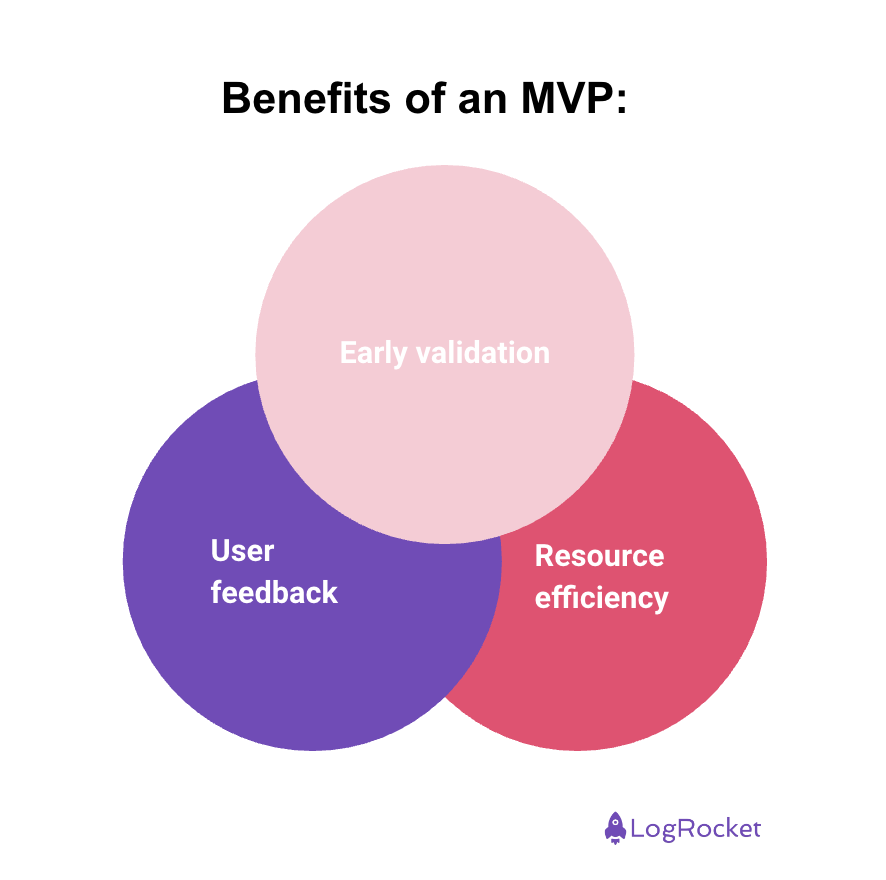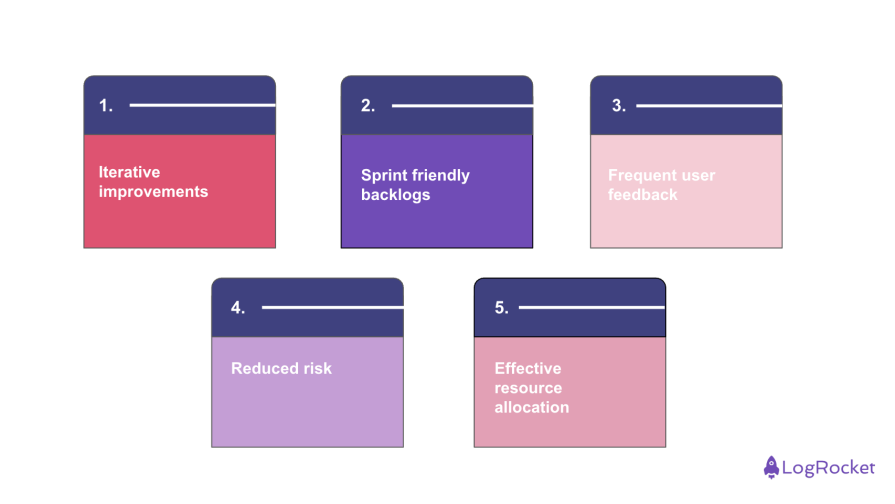When it comes to developing your product strategy, you might think that you should focus on maximums — think maximum customer numbers, maximum revenue, maximum value, etc.

However, maximum performances require maximum budgets and in the development stage of a product you rarely have proven enough value to warrant such an investment. Not only that, you need to have flexibility so that you can shift the product closer and closer to customer needs as you learn more about their pain points.
Counterintuitive as it may sound, successful products often look towards minimums instead. Minimums allow for lower costs, increased agility, and the ability to collect feedback before too much investment has been made. As a PM, minimum viable product (MVP) and minimum business increment (MBI) are two vital concepts.
This article covers the basics of MVPs and MBIs, including when to use each and how to implement them within your product strategy.
A minimum viable product (MVP) is the simplest version of a product that can be released to the market. MVPs allow you to validate an idea and gather user feedback. The approach emphasizes validating ideas early, gathering user insights, and iterating based on user feedback.
When using an MVP, you can expect the following benefits:

When you have a hypothesis about your product and its market fit, an MVP provides an early opportunity to get it out in the market and monitor its reception. It allows you to validate key assumptions and determine whether there is a genuine demand for the product before investing heavily in its development.
By releasing an MVP, you can gather valuable feedback from your users that you can use to better understand their preferences. Once you have this information, tailor your development and feature enhancements directly to user needs.
Because of the reduced scale, developing an MVP requires less resources than a full product. This allows you to focus on essential features, reduce time to market, and minimize the financial risk.
A minimum business increment (MBI) refers to the smallest unit of product or feature development that can deliver value and can be feasibly implemented.
An MBI is a more delivery focused approach that emphasizes scaling work into manageable chunks, reducing scale to reduce risk, and allowing for more regular iterations.
Some of the benefits of an MBI include:

An MBI helps break down features into manageable chunks, allowing your team to work on the smallest increment instead of waiting to develop a complete feature. This approach allows for quicker releases and iterative improvements.
By using MBIs, you ensure that your product backlog has well-defined increments that you can complete within a single sprint, while also being large enough to deliver meaningful value.
By developing and releasing MBIs, you can receive feedback on your product updates more frequently, allowing for further adjustments based on user feedback and market changes. This helps bring your product into closer alignment with customer needs.
The release of smaller increments reduces the overall risk of larger failures. If a particular increment misses expectations, you can still pivot and adjust without significant ramifications.
Delivering MBIs supports the optimization of resources by focusing efforts on the most impactful and smallest chunks of value.
Although MVPs and MBIs both deliver value, an MVP is better suited for:
Use an MVP when you want to test a new product idea or concept with real users in the market. It helps you determine whether a need exists and if your product addresses pain points effectively.
An MVP lets you gather feedback on a new product’s core features, which is crucial for understanding user needs, preferences, and potential improvements.
When faced with limited resources, an MVP creates a basic version of the product and validates its value proposition so that you don’t waste your investments on features that won’t pan out.
An MVP provides a lot of value if you find yourself entering a new market or audience because it allows you to test assumptions about the market’s response before scaling up the product.
On the other hand, use an MBI when you want to:
An MBI approach can be used when you’re working on an existing product and need to break down larger features or enhancements into smaller, manageable parts. This helps you deliver incremental value and iterate based on user feedback.
An MBI approach is useful for prioritizing and managing feature development such that each increment provides business value and aligns with the overall product strategy.
When dealing with complex products or systems, MBIs simplify development by focusing on smaller, discrete increments that enable resource management and risk reduction.
Incorporating MBIs and MVPs into your product strategy involves aligning these concepts with your overall goals, processes, and resource management:
To help you see how you can apply minimums, pay attention to these real-world examples:
In the early 1990s, when the internet was not as ubiquitous as it is now, there was a limit to the trust that people put in internet transactions. Jeff Bezos had a vision for a global ecommerce platform, however he needed to help overcome some of these trust challenges.
The first phase of Amazon MVP development included streamlining the list of products that could be effectively marketed on the internet before settling on books as the most marketable online product. Amazon determined that the decisive factors included price, the number of available titles that could be sold, and the high demand for books all over the world. The rest is history.
Groupon was founded in 2008 as a service to prompt offers from local businesses. Visitors would subscribe via a WordPress site and then the Groupon team would email PDF coupons to them. Over time, Groupon developed a large-scale email list of customers who engaged with the site and the concept grew to what it is today.
Unlike MVPs, there aren’t great stories of famous companies founded on the approach, as MBIs are a more day-to-day strategy for delivering value.
An eCommerce site might start by showing product images, and then incrementally add product videos, user guides, testimonials, and more.
For a website metrics platform, you might start with tables of data, then line graphs, pie charts, filters, and more.
MVPs provide an initial market validation of a product or idea, allowing you to see how they fit within the marketplace, whereas MBIs let you to increment your product on an ongoing basis and continue to deliver added value to your customers.
Ultimately, MVPs and MBIs are both important approaches for you to develop your product over time. Choose the one that makes the most sense for your specific use case and start implementing today.
Featured image source: IconScout

LogRocket identifies friction points in the user experience so you can make informed decisions about product and design changes that must happen to hit your goals.
With LogRocket, you can understand the scope of the issues affecting your product and prioritize the changes that need to be made. LogRocket simplifies workflows by allowing Engineering, Product, UX, and Design teams to work from the same data as you, eliminating any confusion about what needs to be done.
Get your teams on the same page — try LogRocket today.

A practical framework for PMs to use AI in ideation without sacrificing judgment, strategy, or decision quality.

A practical five minute revenue estimation method to help product managers compare ideas, drop low impact features, and prioritize smarter.

A practical guide for PMs who want to stop being bottlenecks, delegate smarter, and lead teams effectively with a clear ownership framework.

Stop letting unreliable data block features. Treat data as inventory to track quality, ownership, and ship with confidence.